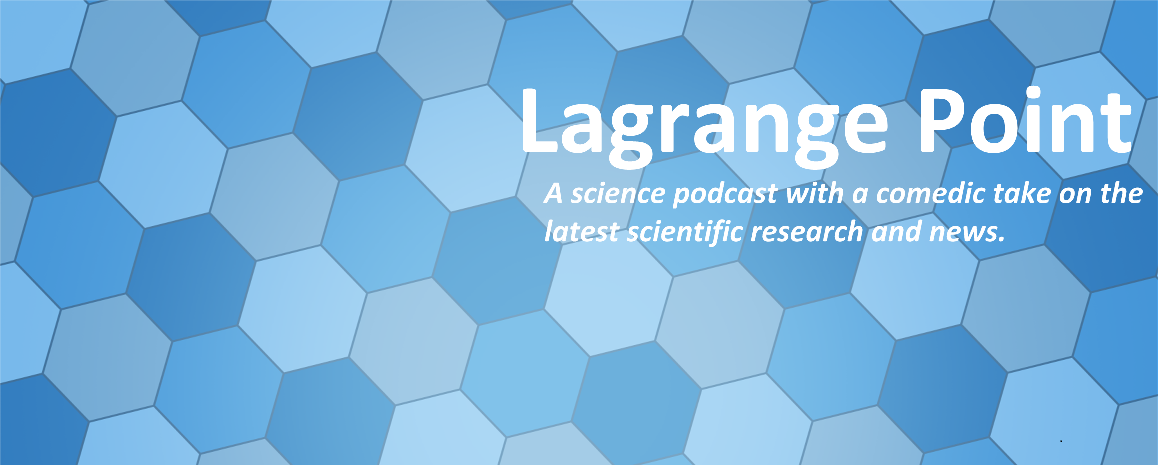Episodes

Monday Jan 21, 2019
Monday Jan 21, 2019
A brain injury like a stroke or a neuro degenerative condition like Huntingdon's or Parkinson’s disease can be a long and arduous ordeal. It can be difficult to diagnose and there are no clear treatments, but scientists are working hard to solve it. We find out about the important role Glial cells play in supporting neurons and how things can go wrong if they are disrupted. We also find out about ways to use the abundance of Glial cells to make new neurons. Plus we get a better understanding of cell death and repair and the roll proteins can play in slowing down those processes to give your brain time to recover.
- Mikhail Osipovitch, Andrea Asenjo Martinez, John N. Mariani, Adam Cornwell, Simrat Dhaliwal, Lisa Zou, Devin Chandler-Militello, Su Wang, Xiaojie Li, Sarah-Jehanne Benraiss, Robert Agate, Andrea Lampp, Abdellatif Benraiss, Martha S. Windrem, Steven A. Goldman. Human ESC-Derived Chimeric Mouse Models of Huntington’s Disease Reveal Cell-Intrinsic Defects in Glial Progenitor Cell Differentiation. Cell Stem Cell, 2018; DOI: 10.1016/j.stem.2018.11.010
- Walter and Eliza Hall Institute. (2018, December 20). Parkinson's disease protein buys time for cell repair. ScienceDaily. Retrieved January 5, 2019 from www.sciencedaily.com/releases/2018/12/181220080000.htm
- Penn State. (2018, November 5). New gene therapy reprograms brain glial cells into neurons. ScienceDaily. Retrieved January 5, 2019 from www.sciencedaily.com/releases/2018/11/181105122433.htm
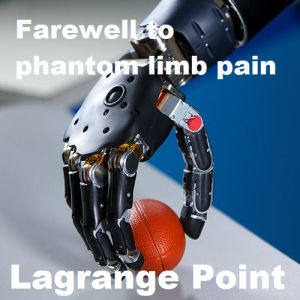
Monday Jan 07, 2019
Episode 308 - Farewell to phantom limb pain, and better prostheses
Monday Jan 07, 2019
Monday Jan 07, 2019
Having a traumatic injury, serious infection or cancer is bad enough let alone if you have to have an amputation. But once that amputation has occurred how do you make life easier for the amputee? Prostheses are helpful, but they can require retraining your brain and lack the sense of touch. Plus phantom limb pain can make life painful and frustrating. This week we find out about surgical and biomedical treatments to help improve prostheses and give amputees better quality of life.
References:
- Bowen, J. B., Ruter, D., Wee, C., West, J., & Valerio, I. L. (2019). Targeted Muscle Reinnervation Technique in Below-Knee Amputation. Plastic and Reconstructive Surgery, 143(1), 309-312. doi:10.1097/prs.0000000000005133
- Cheesborough, J., Smith, L., Kuiken, T., & Dumanian, G. (2015). Targeted Muscle Reinnervation and Advanced Prosthetic Arms. Seminars in Plastic Surgery, 29(01), 062-072. doi:10.1055/s-0035-1544166
- Nathanaël Jarrassé, Etienne de Montalivet, Florian Richer, Caroline Nicol, Amélie Touillet, Noël Martinet, Jean Paysant, Jozina B. de Graaf. Phantom-Mobility-Based Prosthesis Control in Transhumeral Amputees Without Surgical Reinnervation: A Preliminary Study. Frontiers in Bioengineering and Biotechnology, 2018; 6 DOI: 10.3389/fbioe.2018.00164
- Arizona State University. (2018, November 7). New prosthetic hand system allows user to 'feel' again: The Neural-Enabled Prosthetic Hand (NEPH) system marks first time bidirectional prosthesis can be used in home setting. ScienceDaily. Retrieved January 5, 2019 from www.sciencedaily.com/releases/2018/11/181107093757.htm

Monday Dec 31, 2018
Episode 307 - Ancient druidic treatments, wasp venom and peptide cages
Monday Dec 31, 2018
Monday Dec 31, 2018
The arms race against antibiotic resistant bacteria continues. As the world faces down this challenge, we turn to stranger and stranger places for treatment. So how can you turn ancient druidic treatments into modern new antibiotics? How do you make wasp venom actually a useful treatment? Can you trap bacteria inside a cage and just starve them to this? This week we find out about the fight back against bacteria.
References:
- Luciana Terra, Paul J. Dyson, Matthew D. Hitchings, Liam Thomas, Alyaa Abdelhameed, Ibrahim M. Banat, Salvatore A. Gazze, Dušica Vujaklija, Paul D. Facey, Lewis W. Francis, Gerry A. Quinn. A Novel Alkaliphilic Streptomyces Inhibits ESKAPE Pathogens. Frontiers in Microbiology, 2018; 9 DOI: 10.3389/fmicb.2018.02458
- Sina Krokowski, Damián Lobato-Márquez, Arnaud Chastanet, Pedro Matos Pereira, Dimitrios Angelis, Dieter Galea, Gerald Larrouy-Maumus, Ricardo Henriques, Elias T. Spiliotis, Rut Carballido-López, Serge Mostowy. Septins Recognize and Entrap Dividing Bacterial Cells for Delivery to Lysosomes. Cell Host & Microbe, 2018; 24 (6): 866 DOI: 10.1016/j.chom.2018.11.005
- Massachusetts Institute of Technology. (2018, December 7). Engineers repurpose wasp venom as an antibiotic drug. ScienceDaily. Retrieved December 29, 2018 from www.sciencedaily.com/releases/2018/12/181207112651.htm
Antibiotics from druidic recipes in the Irish countryside.
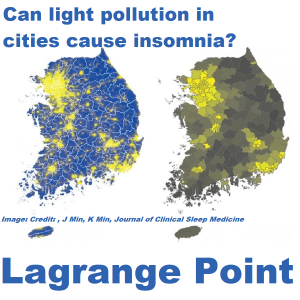
Monday Dec 03, 2018
Monday Dec 03, 2018
Life in the big city can be fully of late nights, lots of lights and risky behaviour. This week we look at what living in the big city may mean for your health. Whether it be the impact of light pollution and getting a good night's rest, to the trade-offs of being a night owl, our circadian rhythms can be impacted by living a 24/7 life. We find out about studies on big data about a cities health, from a long term study of insomniacs in South Korea to using social media to determine when a city is 'feeling lucky' and willing to take a risk.
References:
- Jin-young Min, Kyoung-bok Min. Outdoor Artificial Nighttime Light and Use of Hypnotic Medications in Older Adults: A Population-Based Cohort Study. Journal of Clinical Sleep Medicine, 2018; 14 (11): 1903 DOI: 10.5664/jcsm.7490
- Suzana Almoosawi Snieguole Vingeliene Frederic Gachon Trudy Voortman Luigi Palla Jonathan D Johnston Rob Martinus Van Dam Christian Darimont Leonidas G Karagounis. Chronotype: Implications for Epidemiologic Studies on Chrono-Nutrition and Cardiometabolic Health. Advances in Nutrition, 2018 DOI: 10.1093/advances/nmy070
- A. Ross Otto, Johannes C. Eichstaedt. Real-world unexpected outcomes predict city-level mood states and risk-taking behavior. PLOS ONE, 2018; 13 (11): e0206923 DOI: 10.1371/journal.pone.0206923
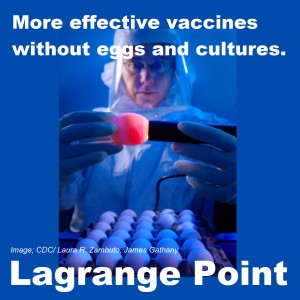
Monday Nov 19, 2018
Episode 301 - More effective Vaccines.
Monday Nov 19, 2018
Monday Nov 19, 2018
Using vaccines to tackle a pandemic is a serious challenge for health agencies. So how do we make vaccines more effective? Can we remove the requirement for a cold chain from lab to clinic? We also find out ways to boost the performance of a flu shot with a simple cream. Plus an update on a new vaccine types to prevent Ebola.
References:
- Jing Zou, Xuping Xie, Huanle Luo, Chao Shan, Antonio E. Muruato, Scott C. Weaver, Tian Wang, Pei-Yong Shi. A single-dose plasmid-launched live-attenuated Zika vaccine induces protective immunity. EBioMedicine, 2018; DOI: 10.1016/j.ebiom.2018.08.056
- Ami Patel et al. Protective Efficacy and Long-Term Immunogenicity in Cynomolgus Macaques by Ebola Virus Glycoprotein Synthetic DNA Vaccines. Journal of Infectious Diseases, 2018 DOI: 10.1093/infdis/jiy537
- NIH/National Institute of Allergy and Infectious Diseases. (2018, September 6). Clinical trial testing topical cream plus influenza vaccine in progress: Cream regimen could boost immunity. ScienceDaily. Retrieved October 13, 2018 from www.sciencedaily.com/releases/2018/09/180906101347.htm
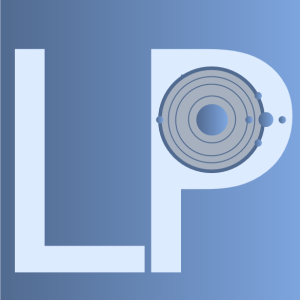
Monday Oct 22, 2018
Monday Oct 22, 2018
Making new treatments often starts by finding out just what building blocks you have. But what if you could use the blocks with whole new sets? What if you could see how the blocks changed between owners? What about making your own brand new blocks? When fighting bacteria, we need every tool we can get. This week we find out about some great ways to take the fight back to bacteria in new and interesting ways from artificial cells, or new combinations of treatments, even to tracking the way bacteria changes over aeons.
References:
- Emily J. Richardson, Rodrigo Bacigalupe, Ewan M. Harrison, Lucy A. Weinert, Samantha Lycett, Manouk Vrieling, Kirsty Robb, Paul A. Hoskisson, Matthew T. G. Holden, Edward J. Feil, Gavin K. Paterson, Steven Y. C. Tong, Adebayo Shittu, Willem van Wamel, David M. Aanensen, Julian Parkhill, Sharon J. Peacock, Jukka Corander, Mark Holmes, J. Ross Fitzgerald. Gene exchange drives the ecological success of a multi-host bacterial pathogen. Nature Ecology & Evolution, 2018; 2 (9): 1468 DOI: 10.1038/s41559-018-0617-0
- Elif Tekin, Cynthia White, Tina Manzhu Kang, Nina Singh, Mauricio Cruz-Loya, Robert Damoiseaux, Van M. Savage, Pamela J. Yeh. Prevalence and patterns of higher-order drug interactions in Escherichia coli. npj Systems Biology and Applications, 2018; 4 (1) DOI: 10.1038/s41540-018-0069-9
- Yunfeng Ding, Luis E. Contreras-Llano, Eliza Morris, Michelle Mao, Cheemeng Tan. Minimizing Context Dependency of Gene Networks Using Artificial Cells. ACS Applied Materials & Interfaces, 2018; DOI: 10.1021/acsami.8b10029
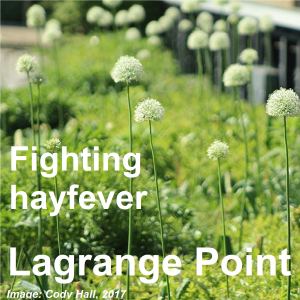
Monday Oct 15, 2018
Monday Oct 15, 2018
A change of seasons means you may be sniffling, sneezing and having teary eyes. So why do our bodies sometimes cause such an over the top response to pollen? We dive into the science behind hay fever, what histamine even does for you, and how it's helping you in more ways than you realise. Plus we find out what's being done to deliver a 1,2,3 blow to Traveller's Diarrhoea.
References:
- Alessandra Misto, Gustavo Provensi, Valentina Vozella, Maria Beatrice Passani, Daniele Piomelli. Mast Cell-Derived Histamine Regulates Liver Ketogenesis via Oleoylethanolamide Signaling. Cell Metabolism, 2018; DOI: 10.1016/j.cmet.2018.09.014
- Caroline B.K. Mathiesen, Michael C. Carlsson, Stephanie Brand, Svenning Rune Möller, Manja Idorn, Per thor Straten, Anders E. Pedersen, Sally Dabelsteen, Adnan Halim, Peter Adler Würtzen, Jens Brimnes, Henrik Ipsen, Bent L. Petersen, Hans H. Wandall. Genetically engineered cell factories produce glycoengineered vaccines that target antigen-presenting cells and reduce antigen-specific T-cell reactivity. Journal of Allergy and Clinical Immunology, 2018; DOI: 10.1016/j.jaci.2018.07.030
- Renee M. Laird, Zuchao Ma, Nelum Dorabawila, Brittany Pequegnat, Eman Omari, Yang Liu, Alexander C. Maue, Steven T. Poole, Milton Maciel, Kavyashree Satish, Christina L. Gariepy, Nina M. Schumack, Annette L. McVeigh, Frédéric Poly, Cheryl P. Ewing, Michael G. Prouty, Mario A. Monteiro, Stephen J. Savarino, Patricia Guerry. Evaluation of a conjugate vaccine platform against enterotoxigenic Escherichia coli (ETEC), Campylobacter jejuni and Shigella. Vaccine, 2018; DOI: 10.1016/j.vaccine.2018.09.052
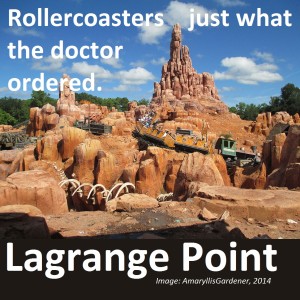
Monday Sep 17, 2018
Monday Sep 17, 2018
It's Ignobel Prize 2018 time. As part of Improbable Research's celebration of curious and comedic science, we find out the rollercoasters, and how they are just what the doctor ordered. The Ignobel Prize 2018 in Medicine went to Mitchel and Wartinger for their ground breaking work into how to use rollercoasters to treat Kidney stones. We look into how rollercoasters work, their impact on the body, and how it can help pass kidney stones. Plus we look at some research into how rollercoaster g-force can impact your brain.
References:
- Marc A. Mitchell, David D. Wartinger. Validation of a Functional Pyelocalyceal Renal Model for the Evaluation of Renal Calculi Passage While Riding a Roller Coaster. The Journal of the American Osteopathic Association, 2016; 116 (10): 647 DOI: 10.7556/jaoa.2016.128
- ROLLER COASTER PHYSICS & G FORCES - COASTERFORCE. (2018). Retrieved from http://coasterforce.com/physics/
- DeHart, Roy L. (2002). Fundamentals of Aerospace Medicine: 3rd Edition. Lippincott Williams & Wilkins.
- "NASA Physiological Acceleration Systems". Web.archive.org. 2008-05-20. Archived from the original on 2008-05-20. Retrieved 2012-12-25.
- NASA Technical note D-337, Centrifuge Study of Pilot Tolerance to Acceleration and the Effects of Acceleration on Pilot Performance, by Brent Y. Creer, Captain Harald A. Smedal, USN (MC), and Rodney C. Vtlfngrove, figure 10
- NASA Technical note D-337, Centrifuge Study of Pilot Tolerance to Acceleration and the Effects of Acceleration on Pilot Performance, by Brent Y. Creer, Captain Harald A. Smedal, USN (MC), and Rodney C. Vtlfngrove
- Kuo, Calvin & Wu, Lyndia & P Ye, Patrick & Laksari, Kaveh & Benjamin Camarillo, David & Kuhl, Ellen. (2017). Pilot Findings of Brain Displacements and Deformations During Roller Coaster Rides. Journal of neurotrauma. 34. 10.1089/neu.2016.4893.
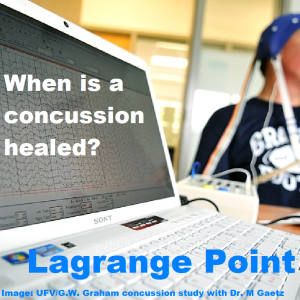
Monday Sep 10, 2018
Episode 291 - Concussion science, assessment frameworks and biomarkers
Monday Sep 10, 2018
Monday Sep 10, 2018
Concussions are a serious issue for everyone from the largest professional leagues to the weekend amateurs. The CDC has released some updated guidelines for assessing concussions and we dive into some new tests to help take the decision out of players hands and back it up with some sound evidence.
- Angela Lumba-Brown, David W. Wright, Kelly Sarmiento, Debra Houry. Emergency Department Implementation of the Centers for Disease Control and Prevention Pediatric Mild Traumatic Brain Injury Guideline Recommendations. Annals of Emergency Medicine, 2018; DOI: 10.1016/j.annemergmed.2018.03.045
- Johnson VE, Stewart W, Smith DH. Axonal pathology in traumatic brain injury. Experimental Neurology. 246: 35-43 (2013).
- Ling H, Hardy, J, Zetterberg H. Neurological consequences of traumatic brain injuries in sports. Molecular and Cellular Neuroscience. 66(B): 114-122 (2015).
- Alexander M. Weber, Anna Pukropski, Christian Kames, Michael Jarrett, Shiroy Dadachanji, Jack Taunton, David K. B. Li, Alexander Rauscher. Pathological Insights From Quantitative Susceptibility Mapping and Diffusion Tensor Imaging in Ice Hockey Players Pre and Post-concussion. Frontiers in Neurology, 2018; 9 DOI: 10.3389/fneur.2018.00575
- Pashtun Shahim, Yelverton Tegner, Niklas Marklund, Kaj Blennow, Henrik Zetterberg. Neurofilament light and tau as blood biomarkers for sports-related concussion. Neurology, 2018; 10.1212/WNL.0000000000005518 DOI: 10.1212/WNL.0000000000005518
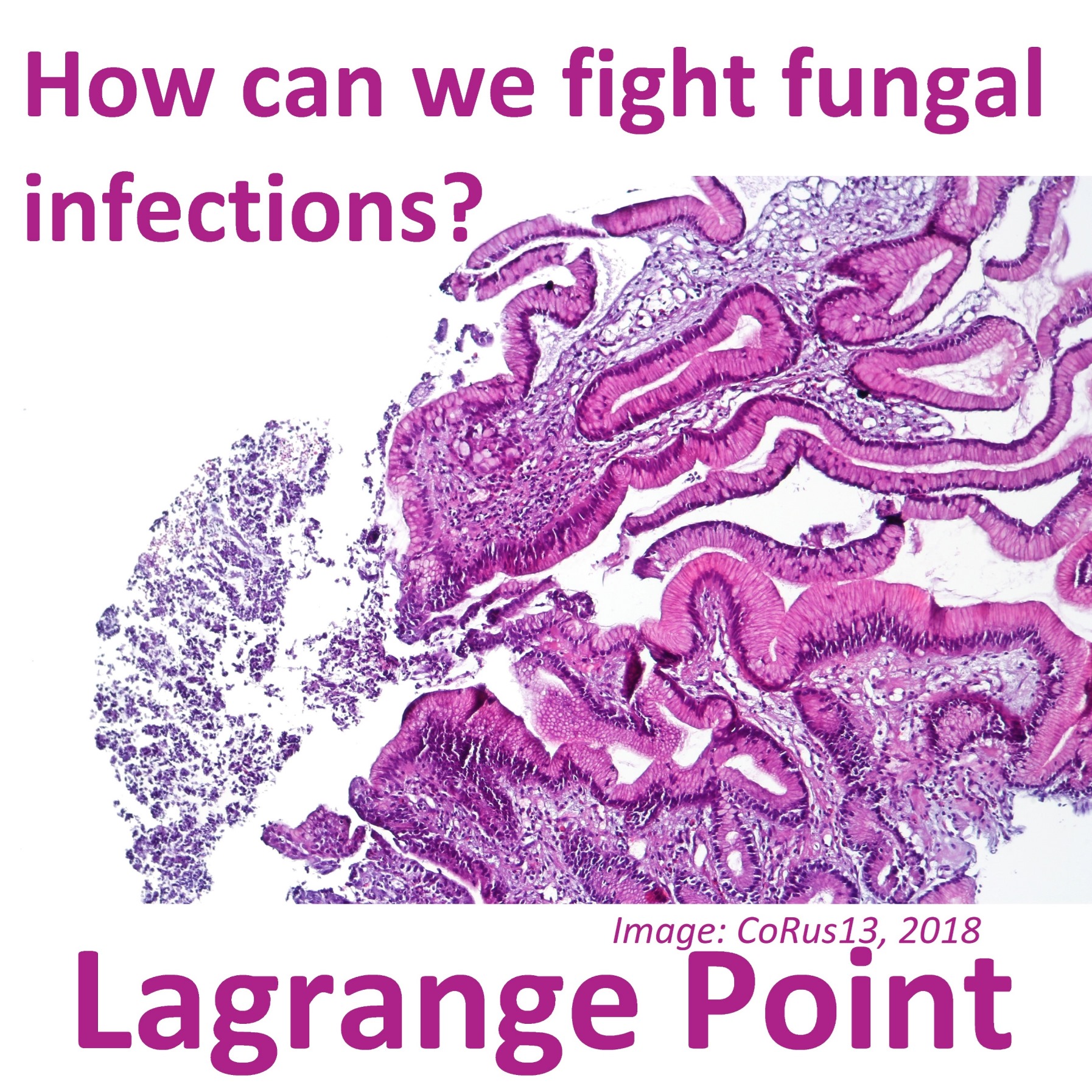
Monday Aug 13, 2018
Episode 287 - Fighting back against fungal infections
Monday Aug 13, 2018
Monday Aug 13, 2018
Everyone knows about bacteria and viruses, but fungal infections can also wreak havoc with our health. Since we know so little about them, fighting back is difficult. But we can learn a lot but diving deep into the way fungal infections are structured, how they fight back and how they fight eachother.
- Xue Kang, Alex Kirui, Artur Muszyński, Malitha C. Dickwella Widanage, Adrian Chen, Parastoo Azadi, Ping Wang, Frederic Mentink-Vigier, Tuo Wang. Molecular architecture of fungal cell walls revealed by solid-state NMR. Nature Communications, 2018; 9 (1) DOI: 10.1038/s41467-018-05199-0
- Timothy M. Tucey, Jiyoti Verma, Paul F. Harrison, Sarah L. Snelgrove, Tricia L. Lo, Allison K. Scherer, Adele A. Barugahare, David R. Powell, Robert T. Wheeler, Michael J. Hickey, Traude H. Beilharz, Thomas Naderer, Ana Traven. Glucose Homeostasis Is Important for Immune Cell Viability during Candida Challenge and Host Survival of Systemic Fungal Infection. Cell Metabolism, 2018; 27 (5): 988 DOI: 10.1016/j.cmet.2018.03.019
- University of Wisconsin-Madison. (2018, May 22). A hidden world of communication, chemical warfare, beneath the soil. ScienceDaily. Retrieved July 21, 2018 from www.sciencedaily.com/releases/2018/05/180522082202.htm
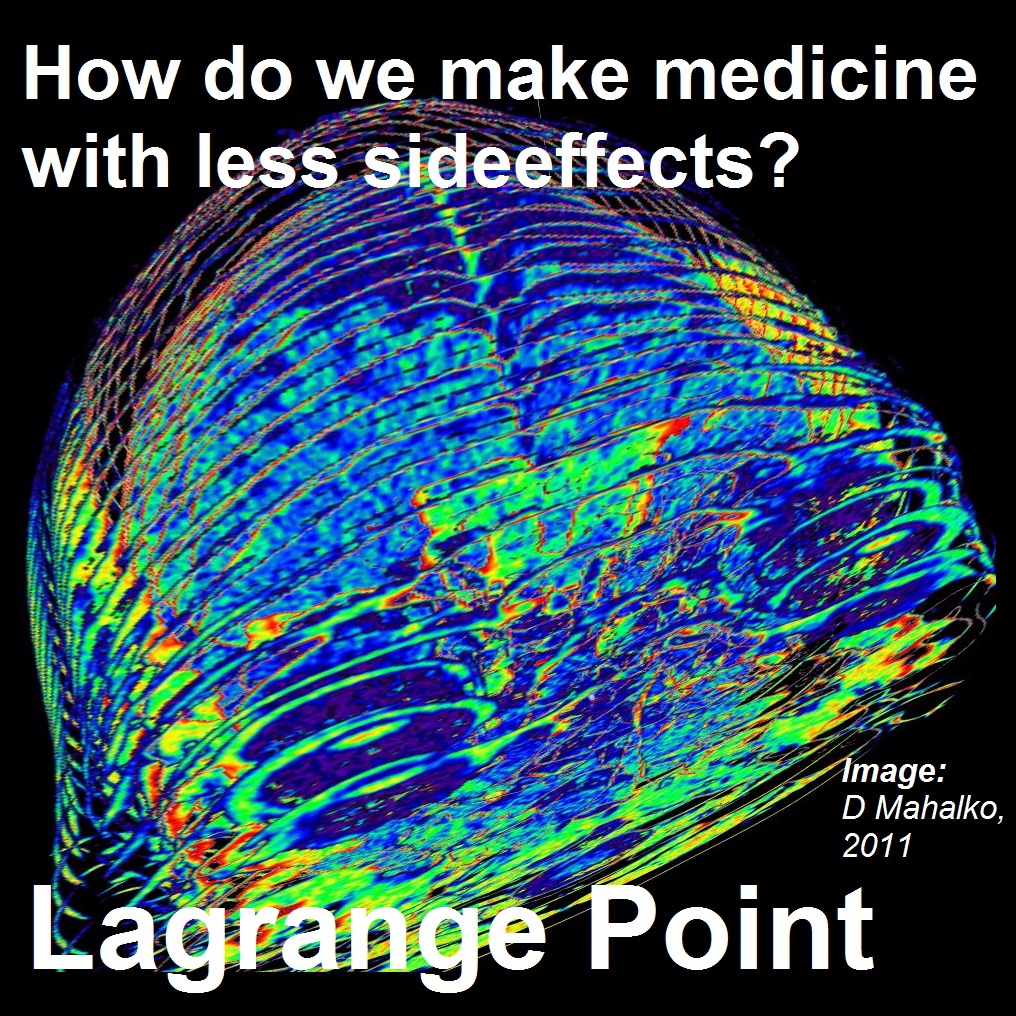
Monday Jul 09, 2018
Episode 282 - More precise precision medicine plus last chance medications
Monday Jul 09, 2018
Monday Jul 09, 2018
How far would you go to find a treatment that helps you or a loved one suffering from a chronic condition? Is it worth the side effects or the pain of jumping through bureaucratic hoops? Is it worth risking the black market? Plus we find out ways to make precision medicine even more precise to rule out side effects.
References:
- Bell, F. (2017, March 01). Sick kids chosen as first patients to receive legal medicinal cannabis in Victoria. Retrieved from http://www.abc.net.au/news/2017-03-01/children-with-epilepsy-receive-legal-medicinal-cannabis-victoria/8313902
- Dunstan, J. (2018, June 08). Dad defends medicinal cannabis program as kids drop out. Retrieved from http://www.abc.net.au/news/2018-06-08/victorian-medicinal-cannabis-trial-kids-drop-out/9848596
- Medical Marijuana and Epilepsy. (n.d.). Retrieved from https://www.epilepsy.com/learn/treating-seizures-and-epilepsy/other-treatment-approaches/medical-marijuana-and-epilepsy
- Understanding Epilepsy. (n.d.). Retrieved from https://www.epilepsy.org.au/about-epilepsy/understanding-epilepsy/
- Zafar, A. (2017, May 26). Cannabis compound shown to slash seizures in kids with rare form of epilepsy | CBC News. Retrieved from https://www.cbc.ca/news/health/dravet-syndrome-epilepsy-cbd-1.4130180
- A. Suraev, N. Lintzeris, J. Stuart, R. C. Kevin, R. Blackburn, E. Richards, J. C. Arnold, C. Ireland, L. Todd, D. J. Allsop, I. S. McGregor. Composition and Use of Cannabis Extracts for Childhood Epilepsy in the Australian Community. Scientific Reports, 2018; 8 (1) DOI: 10.1038/s41598-018-28127-0
- Lei Zhang, Peng Zhang, Guangfu Wang, Huaye Zhang, Yajun Zhang, Yilin Yu, Mingxu Zhang, Jian Xiao, Piero Crespo, Johannes W. Hell, Li Lin, Richard L. Huganir, J. Julius Zhu. Ras and Rap Signal Bidirectional Synaptic Plasticity via Distinct Subcellular Microdomains. Neuron, 2018; 98 (4): 783 DOI: 10.1016/j.neuron.2018.03.049
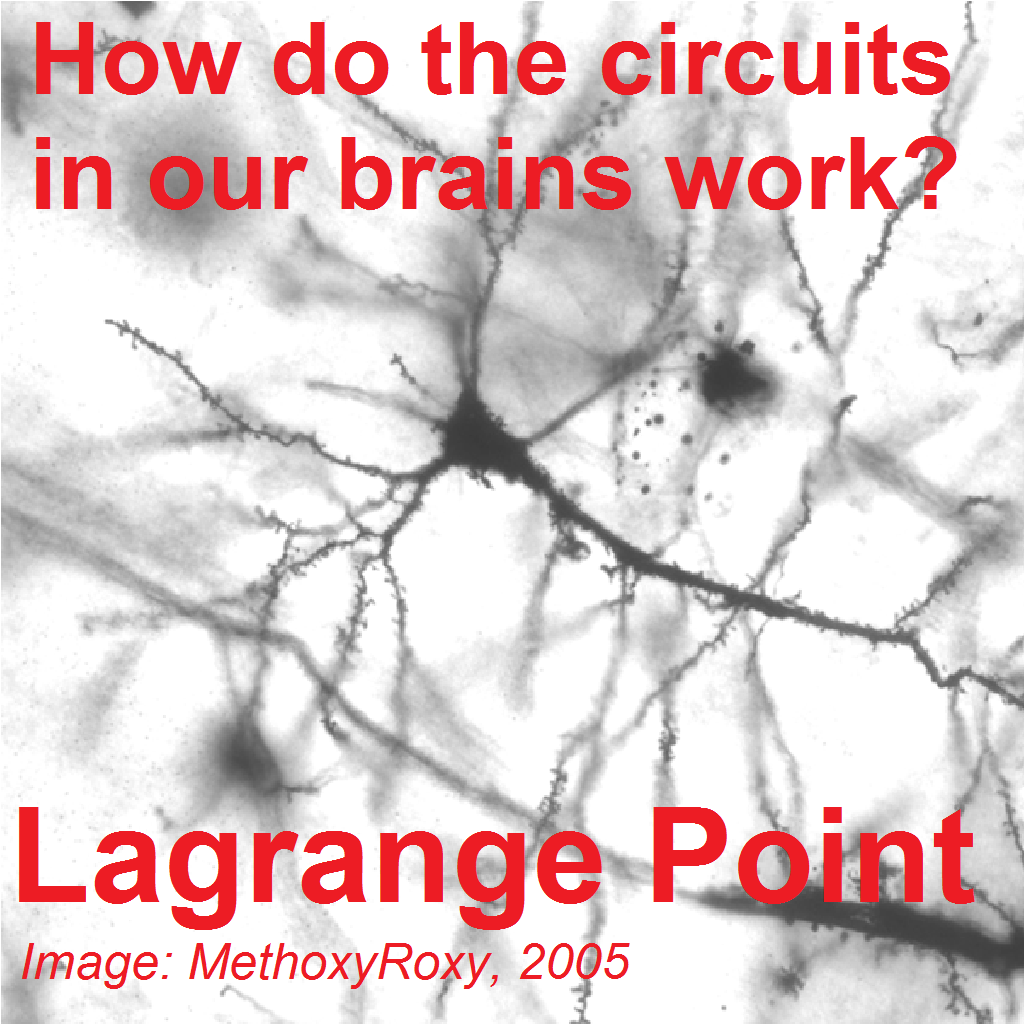
Tuesday Jun 05, 2018
Episode 277 - Breaking down the brain and figuring out how the pieces work
Tuesday Jun 05, 2018
Tuesday Jun 05, 2018
Our brains are incredibly complex machines, running millions of calculations in no time at all. But how do these fantastic circuits work? If you follow AI and computer science you may have heard of a ''neural net'' style program which mimics how the brain learns, but really, how do the messages get passed between neurons along such networks? Does shape matter? Can we study individual pathways? What happens if you try and pulse the brain to give it a boost? We find out about neurons, their networks and more.
References:
- Shotaro Yoshida, Midori Kato-Negishi, Shoji Takeuchi. Assembly and Connection of Micropatterned Single Neurons for Neuronal Network Formation. Micromachines, 2018; 9 (5): 235 DOI: 10.3390/mi9050235
- Fong Kuan Wong, Kinga Bercsenyi, Varun Sreenivasan, Adrián Portalés, Marian Fernández-Otero, Oscar Marín. Pyramidal cell regulation of interneuron survival sculpts cortical networks. Nature, 2018; 557 (7707): 668 DOI: 10.1038/s41586-018-0139-6
- Nicole C Swann, Coralie de Hemptinne, Margaret C Thompson, Svjetlana Miocinovic, Andrew M Miller, Ro’ee Gilron, Jill L Ostrem, Howard J Chizeck, Philip A Starr. Adaptive deep brain stimulation for Parkinson’s disease using motor cortex sensing. Journal of Neural Engineering, 2018; 15 (4): 046006 DOI: 10.1088/1741-2552/aabc9b

Thursday Jan 02, 2014
Episode 1 - The Pilot
Thursday Jan 02, 2014
Thursday Jan 02, 2014
Welcome to Lagrange Point! Tune in for an informative but funny look into the world of science from the Young Scientists of Australia. Come and hang out at the Lagrange Point whilst we talk about:
-Polymer clothing from shrimp shells
-If working in scienctific research is the most ethical use of a lifetime
-Why guppy fish hang around with less attractive friends to boost their chances at love.

Thursday Jan 02, 2014
Episode 14 - Fairy Penguins, Tiger troubles and regrowing teeth
Thursday Jan 02, 2014
Thursday Jan 02, 2014
We talk about Fairies at the end of the St Kilda Pier, well fairy penguins that is. We also delve into the challenges facing Tigers in Indian as they try to find a good mate and figure out ways to use stem cells to regrow our teeth!

Thursday Jan 02, 2014
Episode 18 - Studying and Exams Mythbusting
Thursday Jan 02, 2014
Thursday Jan 02, 2014
Are you being bombared by absurd study 'advice' or tricks for getting through exams? In this week's episode we bust a whole bunch of exams and studying myths to try and figure out what works and what is pure fiction! Including associative learning, sleep deprivation, cramming, and strange studying superstitions.

Thursday Jan 02, 2014
Episode 19 - Brain training, vitamins and ebooks for learning
Thursday Jan 02, 2014
Thursday Jan 02, 2014
Want the best tools to help your learning? We investigate brain training, if vitamins boos ttest scores and the benefits of using ebooks for learning!
